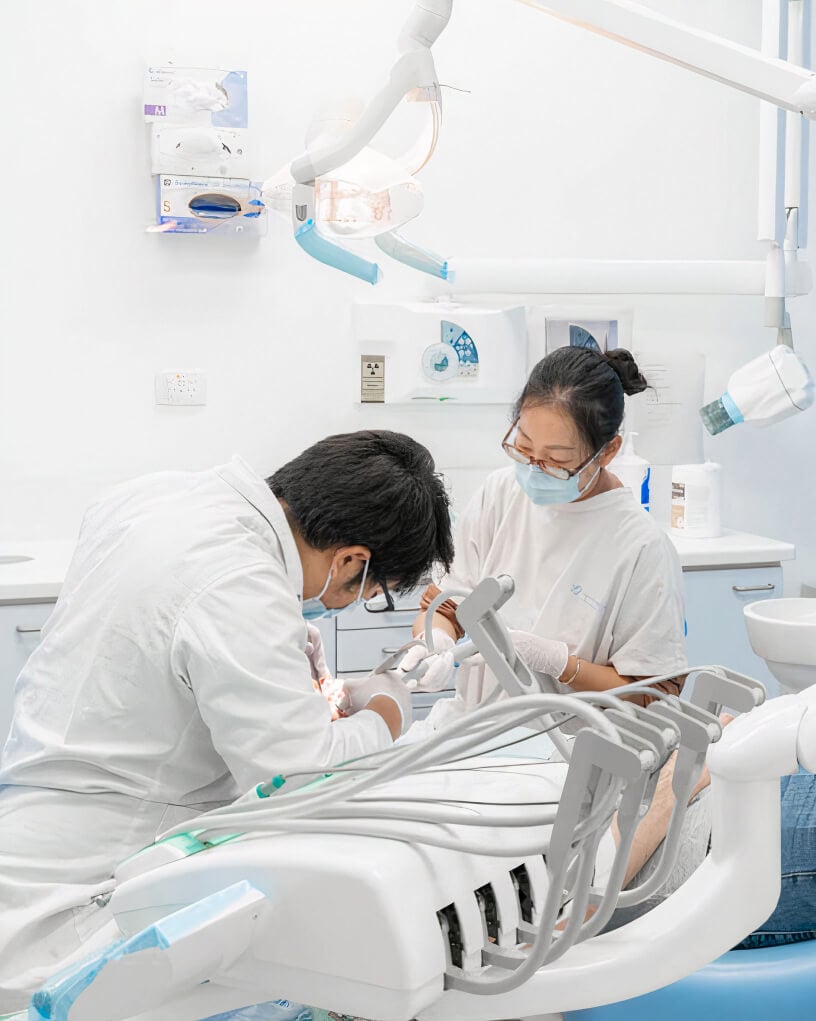Swelling is a relatively common side effect after a tooth extraction, but if you follow your dentist’s care instructions you can keep it to a minimum. Let’s take a look at how to manage swelling after tooth extraction.
Tooth Extraction: What To Expect Afterwards
Tooth extractions should always be a last resort and not the first course of action however sometimes it is not possible to save a tooth and it needs to be extracted. While you won’t necessarily swell up like a chipmunk, some swelling may occur. Some other side effects include
- Slight bleeding
- Mild pain or discomfort
Swelling After Tooth Extraction: Why It Happens
 Your tooth socket needs to go through a period of healing after tooth extraction and the first phase is known as the inflammatory phase. During the inflammatory phase, the blood clot needs to form in the socket and granulation tissue must form over the wound.
Your tooth socket needs to go through a period of healing after tooth extraction and the first phase is known as the inflammatory phase. During the inflammatory phase, the blood clot needs to form in the socket and granulation tissue must form over the wound.
You can expect some swelling to occur up to four days after your tooth extraction before the growth of new tissue can replace the blood clot. By the fifth day, the swelling should have subsided naturally but it may take up to two weeks for it to disappear completely. The good news is that there are measures you can take to minimize swelling and speed up recovery and healing.
How To Reduce Swelling After Tooth Extraction?
Once the tooth extraction has been done you will be given a piece of gauze to bite down on. The pressure from your bite should help to curb the bleeding, although some light bleeding can be expected for up to 24 hours afterwards. This is an important step because you need the bleeding to stop and a blood clot to form over the wound. You might need to replace the gauze if the area is bleeding heavily.
Tips To Help With Swelling After Tooth Extraction
Patients respond differently to tooth extractions. Some patients experience greater swelling than others, so you may need to try a combination of tips in order to get relief.
Gentle rinsing with warm saline solution is recommended for the first 24 hours after tooth extraction. Do not brush the areas as you could dislodge the blood clot. Keeping the site clean may help with swelling and inflammation.
Get lots of rest but make sure you rest and sleep with your head elevated, so that blood doesn’t pool in your head, as this contributes to swelling.
Use cold and warm compresses to ease the swelling. Make sure you do not place a compress directly against your gum, but rather hold it on the outside of your jaw and neck.
Eat on the other side of your mouth for the first week after your tooth extraction. Not only will your mouth be sensitive, but eating and drinking could also dislodge the blood clot.
Use any medication prescribed by your dentist. Sometimes it is necessary to use a non-steroidal anti-inflammatory in order to manage the swelling if the other tips are not effective or do not work fast enough.
For more tips on managing swelling after tooth extraction please contact us: (02) 9181 3668.







